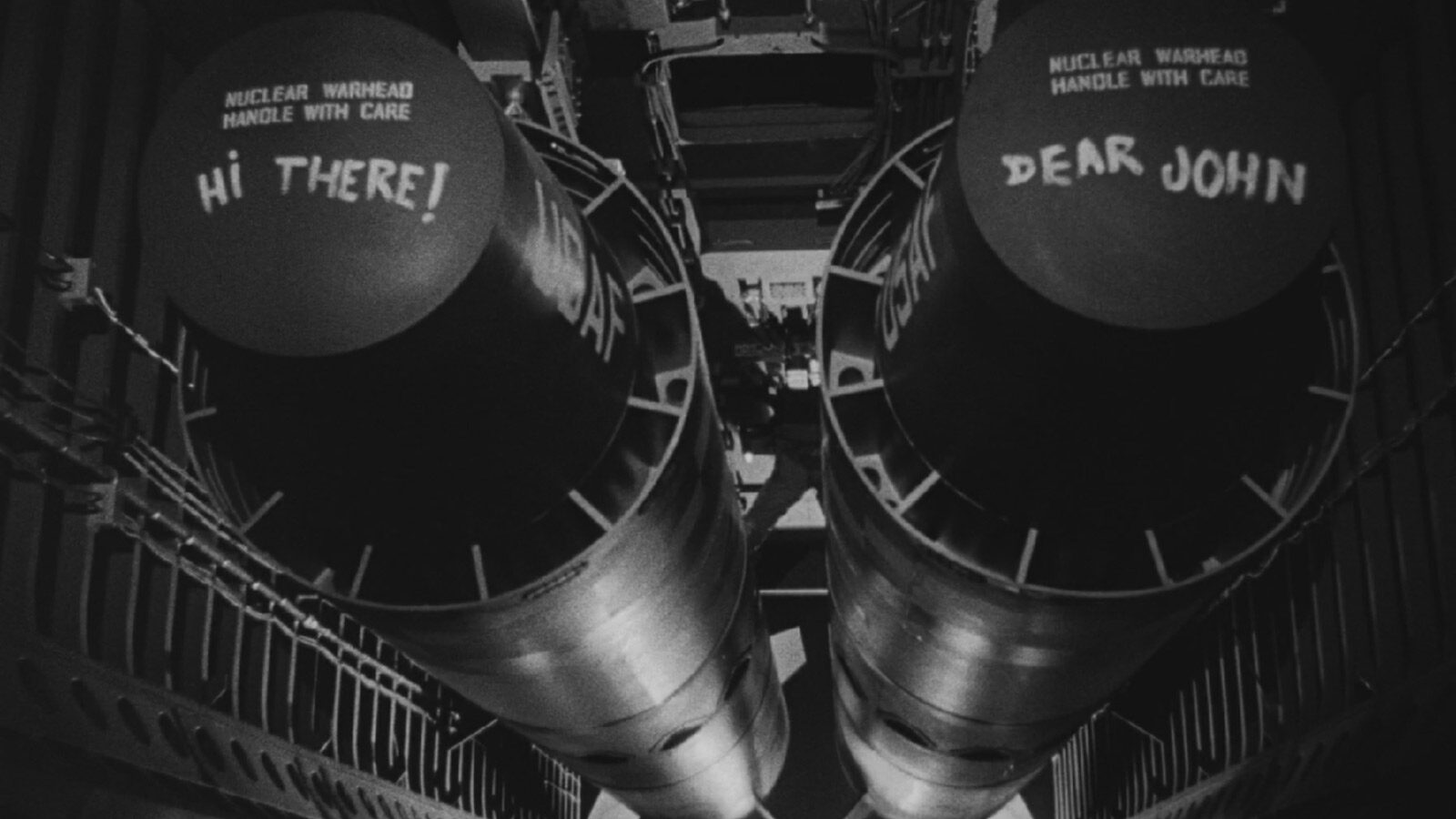By Sean Doyle in the May-June 2016 Issue

Danse Macabre
When did soundtracks stop playing along?
At the end of Stanley Kubrick’s Dr. Strangelove, nuclear warheads detonate all across the world, to the peaceful, nostalgic tune of Vera Lynn’s “We’ll Meet Again.” Henry Mancini called this kind of juxtaposition “playing against the scene.” How cruelly jarring the irony of that closing sequence must have seemed to audiences in 1964, pairing an optimistic ode to a lover serving abroad with a realization of the world's worst fear, the war no one would be returning home from.

From the May-June 2016 Issue
Also in this issue
Prior to the ’60s, ironic or dissonant song choices on soundtracks were rare, often only diegetic, like the child murderer of Fritz Lang’s M whistling “In the Hall of the Mountain King” while abducting kids, or Robert Mitchum’s diabolical, gospel-singing reverend in The Night of the Hunter. These choices are unsettling but the moral cosmology of the films is not upset by the presence of evil. A villain may come singing sweet songs but the film’s score will ultimately warn you of their true intentions. A film’s soundtrack is, like the movement of the camera, the work of God. When it contrasts with what’s on screen, the film’s God seems unjust, or even cruel. Akira Kurosawa was an early explorer of this idea, pairing somber scenes with cheerful music in films like 1948’s Drunken Angel.
Over the next 20 years, experimental filmmakers like Kenneth Anger further exploited the subversive potential of combining upbeat music with dark and upsetting imagery. Kubrick was arguably responsible for bringing the technique into mainstream filmmaking, most infamously through A Clockwork Orange’s musical rape scenes. But soundtrack dissonance would become an essential part of the career of many directors, like Martin Scorsese. There’s a mocking irony to a montage of dead bodies set to the classic rock hit “Layla,” or someone being beaten to death to the tune of Donovan’s “Atlantis,” but there’s also something organic. In titles such as Mean Streets and Goodfellas, Scorsese drew on music from the era, as well as pulling from his own record collection. His movies take place in a monstrously cruel world, but as life and death play out, songs are still playing on the jukebox.
Spring Breakers
In the films of Quentin Tarantino, the commonality of pop music implied by Scorsese became explicit, with criminals and killers bonding over their shared love of ’70s radio hits. By the start of the 1990s, irony had become an American pastime. The jarring soundtrack choice, a technique that originally averted cliché, had become one itself. The visionary directors of the last 20 years have been more likely to use soundtracks in absurd, self-aware contexts, playing off of pop culture and audience expectation in amusing, complex new ways. Take the opening of Michael Haneke’s gruesome media satire Funny Games and its use of a ludicrously chaotic song by noise band Naked City, or Boogie Nights, in which Paul Thomas Anderson uses banal pop standards to both mock and underscore the hollowness, paranoia, and frenzy of the world his characters inhabit.
Harmony Korine’s Spring Breakers features perhaps the most memorable example in recent years: a violent, slow-motion crime spree set to Britney Spears’s twinkling “Everytime.” The song is a perfect match for Korine’s tale of teenage oblivion, a dark ballad by a troubled pop star, one that anyone in their twenties is just as likely to recognize and sing along to as the film’s pink balaclava-clad protagonists. The tinny music-box melody clashes with the ugliness of the violence on-screen, while also complementing the beauty Korine’s camera finds in it. It’s both sincere and ironic, serious and silly, an active agent in the scene, questioning and recontextualizing what’s on-screen.
Like “We’ll Meet Again” at the end of Dr. Strangelove, the song’s presence reveals an intense awareness of the film’s audience. A soundtrack was once an emotional guide wire for the audience to grasp onto. The last few decades have turned it into something that crosses the barriers between art and the real world, between viewer and screen.
IN FOCUS: Dr. Strangelove is available in June on Blu-ray from The Criterion Collection.
Sean Doyle is a freelance writer from Chicago and author of The Worst Albums Ever.



